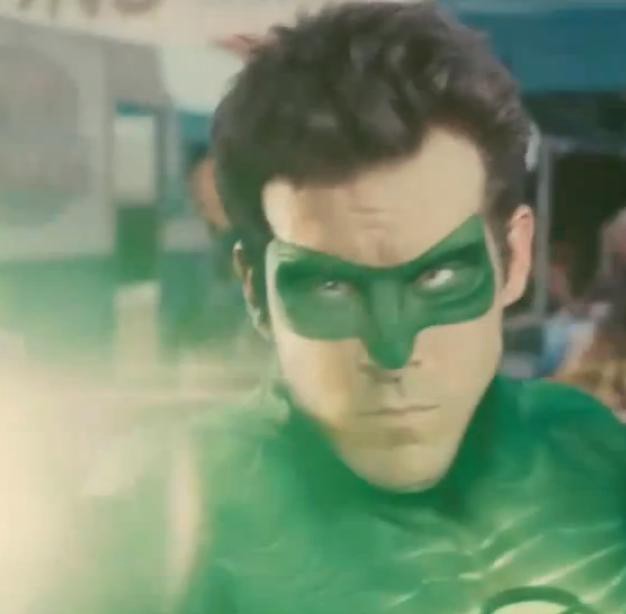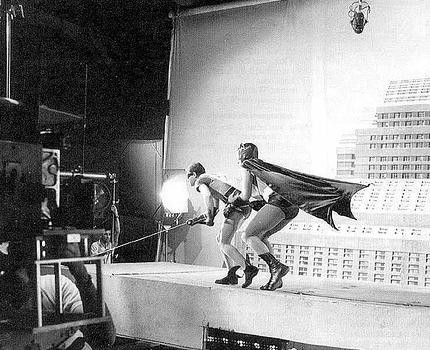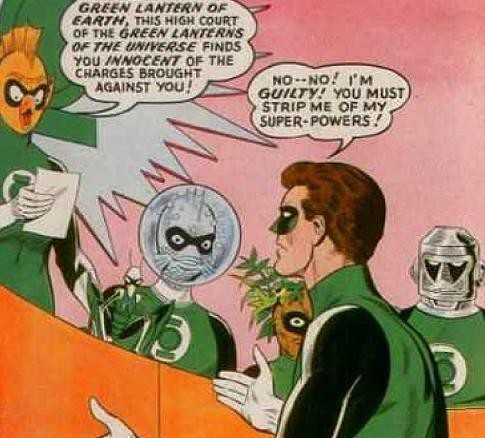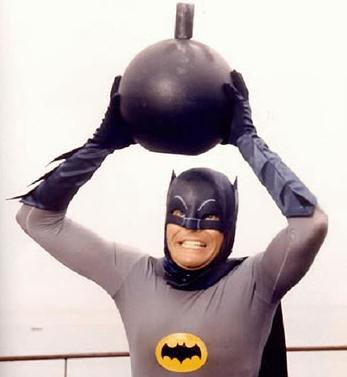Comic Hero Fanboys Make Terrible Comic Hero Movies
by Matt Ealer

Once a refuge for the maladjusted and the childish — and a cool dip in the pop art pool for the rest of our tired masses trudging through another summer — the comic book movie has shed its pulp trappings. It now strives for middlebrow respectability as a box office tactic. The new pitch is: After a hard day of tooling around in your Prius listening to “This American Life,” why not come to the theater and spend some time with your pal Iron Man (played by Less Than Zero star Robert Downey Jr., so don’t forget to get a head start on your 80s party!) instead of curling up in front of the DVR full of “Men of a Certain Age” and “True Blood” with a Trader Joe’s meal-ready-to-eat?
The problem? The inmates have taken over the asylum. The combination of Christopher Nolan’s runaway success — critically and commercially — with The Dark Knight and the filling of the ranks of the comic book creators, and in turn the properties they parent, with fanboys who take the material Bible-seriously has landed us in an ugly situation. Riding in on a verdant glow polished so bland it’s nearly unrecognizable, Green Lantern isn’t saving anyone’s day. Fill a cast and crew with true cool indie-dad believers in comic book as the best art form, and you get a smooth and endless mélange of pap.

Once, the people at the helm were more likely TV execs laughing at a screening of the hokey “Batman” serials of the 40s with the hip kids at Chicago’s Playboy Club. These were people who readily attested to loathing comic books, and we got the Adam West “Batman”: an enduring icon with a theme song that remains in everyone’s head without the benefit of a proper DVD release. This was rock candy pop art that gives mid-60s Godard a run for its money without even trying.
And the people who actually made comic book movies were a bunch of megalomaniacs arguing to this day over copyrights, who would switch out directors in the middle of filming because the first one just isn’t playing ball, who weren’t afraid to cast unknowns, and we believed a man can fly, in Chris Reeve’s Superman.
Tim Burton, Jack Nicholson and Michael Keaton were all ambivalent-to-hostile to the idea of comics. Nicholson famously angled for the biggest single movie paycheck to date and demanded top billing even though the movie was named for Keaton’s character. Keaton tells the story of taking a moment with Jack to remind each other that they were grown men in these ridiculous getups on set. And while the nerds still bitch and moan about Batman smilingly strapping a ticking bomb to a goon, on any street corner the t-shirt design you see is the one from 89’s Batmania, a yellow oval stark against black — not Nolan’s later art school cool that wouldn’t look out of place on a set of high-end speakers.
Those now grasping at mainstream legitimacy are not their studio exec-bosses with a strict money aim or auteurs slumming, they’re fanboys, desperate that the rest of the world should look at these things with the same reverence they do. With Green Lantern, DC Comics writer and svengali Geoff Johns is listed as co-producer, and it shows.

Like Johns’ comics plots — long story arcs that seek to build an Official History arguing for, say, Green Lantern’s very important status not just in DC lore but in the broader culture — the movie tries to cram way more into an origin story than is necessary. There’s the entire history of the Green Lantern Corps and its Guardian overlords. There’s a tedious yet superficial sketch of the backgrounds of Hal Jordan and Carol Ferris. These two should be the main characters of the movie, yet they somehow never seem to be amid all the sound and fury.
There’s 10 minutes of backstory exposition before the movie even starts in earnest like a Star Wars “Last Time on Star Wars” roll, illustrated with $100,000 of CGI that leaves the geeks slobbering and the normies running for the concession stand. (Perhaps it was a vertical marketing strategy?)
And as with Johns’ own plots, this is all shoehorned in with comforting allusions to previous superhero lore, at once a familiar palliative to the general audience and a winking aside to the true fans. Here is the helicopter rescue from Superman: The Movie; here is the nebulous world-eater from the second Fantastic Four movie; here is the city battle from Superman II; here is Jim Carrey’s turn as Edward Nigma regurgitated by Peter Sarsgaard.
Ryan Reynolds plays Jordan as a bratty, pouty bad boy who “doesn’t play by the rules.” The Hal Jordan of the comics was an intergalactic super cop, the one DC hero that was more of a boy scout than Superman, who needed an entire new title in the early 70s filled with Green Arrow scowling at him: “Lighten up and open your eyes, pig.” No, audiences won’t relate to that, you see. And the fanboys running the show would much rather have a chiseled, lady-chasing and potty-mouthed Reynolds as their Mary Sue avatar. (This is a byproduct of the Apatow creep: nerds and doofuses can actually have sex now, so they want someone more sex-getting to identify with.)
And still the movie plays it so safe that you’re left checking your watch. At no point is the audience filled with anything approaching awe, and you’d be hard-pressed to make the argument that they’ll walk away more conversant on the Guardians of planet Oa or with a burning desire to see Sinestro turn, erm, sinister.

Despite the joys of Nolan’s Batman world, it’s sad that a Teutonic, dour, humorless prig of a Batman would be the new model for comics on the screen. Give me West lecturing Burt Ward about proper dental hygiene before they head out to take on a squawking Burgess Meredith and his array of deadly trick umbrellas, any day.
When we’re left with not-entirely unpleasant but completely forgettable rolls of filler like Green Lantern, it’s enough to make you think Ang Lee’s Hulk was the last great superhero movie. Because it wasn’t afraid to fail, even as it failed spectacularly.
Matt Ealer could go on but unlike some people making movies he doesn’t want to bore you.
